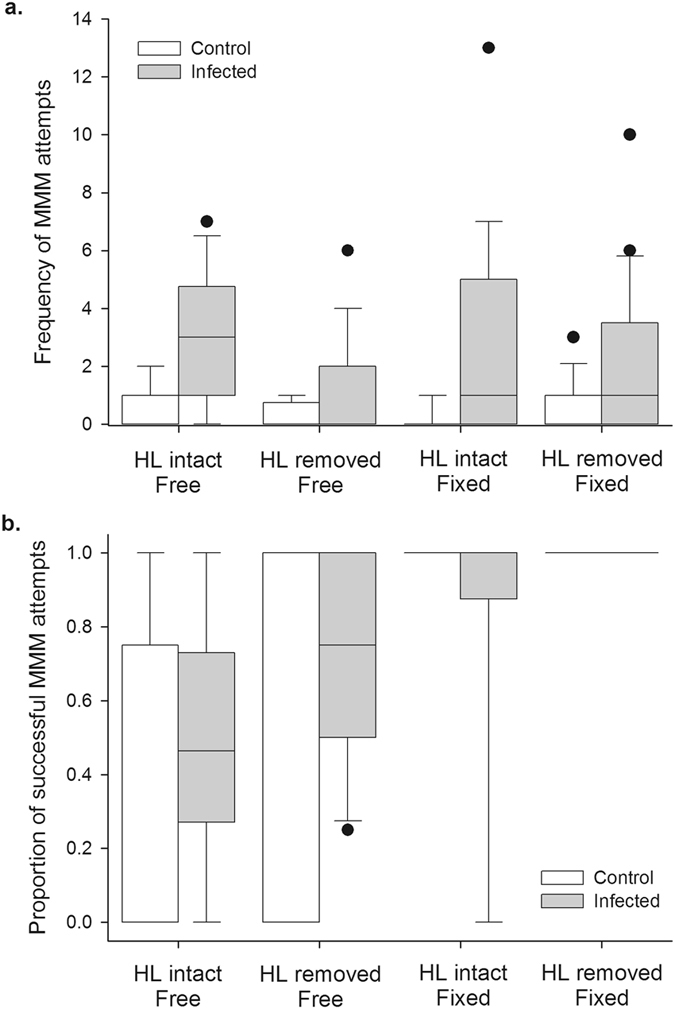Figure 2.

The effect of fungal infection on MMM attempts, and the effect of reduced escape capability on the success of MMM attempts. (a) Frequency of MMM attempts by control and fungus-infected focal locusts exposed to otherwise healthy males with hind legs removed, and/or fixed in position, such that they were less able to avoid or resist MMM attempts. Twenty-one control and 24 fungus-infected locusts were observed in total and exposed to each manipulated male type in random order. Due to locust deaths, data for a particular trial type could be missing for a given locust, and actual sample sizes were: HL intact/free – 19 control, 24 infected; HL removed/free – 20 cont., 21 inf.; HL intact/fixed – 19 cont., 23 inf.; HL removed/fixed – 18 cont., 21 inf. (b) Proportion of the MMM attempts in part (a) that resulted in the mounting male successfully positioning itself on top of the mounted locust in the manner characteristic of males mounting females. The sample comprised only those locusts that made at least one MMM attempt in part (a), and were: HL intact/free – 9 cont., 20 inf.; HL removed/free – 5 cont., 10 inf.; HL intact/fixed – 3 cont., 14 inf.; HL removed/fixed – 5 cont., 13 inf. For control locusts exposed to each type of free-moving manipulated male, the median values are zero; for infected locusts exposed to HL intact/fixed males, the median value is one. In both panels, boxes denote the median, 25th and 75th percentile values, whiskers the 5th and 95th percentile values, and circles the more extreme observations.
